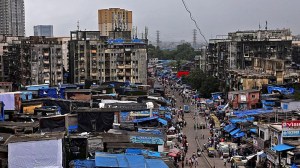Lakes of Bengaluru: Resident bodies press authorities to pull up socks before monsoon to save Kothanur Lake from getting polluted
The local residents fear that the entry of sewage to the lake, if not stopped, would contaminate the water body.
 Located in Bengaluru South, the Kothanur Lake is spread over 18 acre and brims with water even during extreme summer. (Express Photo: Jithendra M)
Located in Bengaluru South, the Kothanur Lake is spread over 18 acre and brims with water even during extreme summer. (Express Photo: Jithendra M)Rejuvenated lakes having poor water quality due to the inflow of sewage has always been one of the major concerns of the citizens of Bengaluru. Earlier this month dead fishes were found floating at the Kothanur Lake, thereby once again raising the alarm of entry of sewage into the water body.
Located in Bengaluru South, the Kothanur Lake is spread over 18 acre and brims with water even during extreme summer. However, the local residents fear that the entry of sewage to the lake, if not stopped, would contaminate the water body.
 The lake has water reserves throughout the year.
The lake has water reserves throughout the year.
The local residents have formed the Kothanur Lake Development Association and have run a ‘Clean Kothanur Lake Campaign’ under which plastic waste was removed and saplings were watered. The campaign was run in coordination with the lakes and solid waste management department of the Bruhat Bengaluru Mahanagara Palike (BBMP).
Explaining the background of the development of the lake by the government bodies over the years, B R Shivaswamy, president, Kothanur Lake Development Association, said, “The lake has water reserves throughout the year. The Bangalore Development Authority (BDA) had developed the lake in the year 2010 at a Budget of Rs 2.63 crore and had put up two layers of fences around the lake. Despite the fencing, the entire lake turned into an open air toilet and the peripherals of the lake were used for illegal activities.”
Shivaswamy added, “After the BBMP had taken over the lake, security was tightened and open air defecation was controlled to a major extent. A proper walkway was laid three years ago. In recent years, the lake division of the BBMP has taken up lots of developmental activities. The citizens of the area were greatly benefitted and had started using the lake for walking and resting.”
 The local residents fear that the entry of sewage to the lake, if not stopped, would contaminate the water body.
The local residents fear that the entry of sewage to the lake, if not stopped, would contaminate the water body.
Adding further, he said since the last two to three years, sewage is entering the lake water. “The citizens have lodged complaints with the agencies concerned. Unfortunately, there was no permanent solution to prevent primary sewage from entering the lake. Recently, a lot of sewage entered the lake from the Kothanur Lake view Apartment side and caused heavy damage. The primary sewage is entering the lake from three inlets. A wonderful lake will be destroyed if a permanent solution is not ensured,” Shivaswamy added.
Secretary of the association, S Shivashankar said, “The beauty of the lake is that we have not seen the surface of the water body in the past nine years. Even during summers, the lake brims with water. We have sent a representation to the BWSSB with regards to the entry of sewage but to no avail. We have received excellent cooperation from the lakes division of the BBMP. If the entry of sewage is not arrested with immediate effect, the credit of spoiling a serene lake will be attributed to the BWSSB. It has chosen a novel way of solving blockage anywhere in the area by allowing sewage water to enter the Kothanur Lake.”
 The lake has a rich bush and tree vegetation in small portions both north East and extreme south region which attracts small birds.
The lake has a rich bush and tree vegetation in small portions both north East and extreme south region which attracts small birds.
Highlighting the importance of the water body, lake activist Raghavendra B Pachhapur said, “The Kothanur Lake is almost at the top of the K C Valley. It fills up with rainwater from the surrounding hillock (Dinne) areas like Kothnur Dinne and Jambusavari Dinne through the drains and further downstream feeds the Chunchaghatta Lake. The lake has a rich bush and tree vegetation in small portions both north East and extreme south region which attracts small birds. The wetland also has vegetation which attracts birds. As many as 55 bird species have been noticed around the lake since 2016. Perching spaces are comparatively lesser and need improvement.”
He said that the response to choking at the sewage chambers upstream by the BWSSB officials is very poor, said experts. “The water quality will be a cause of concern in the future. The authorities at BWSSB should be sensitive to sewage overflow in the upstream areas and should respond to complaints with no delay. Raw sewage entered twice into the wetland area within a span of 20 days during March this year which led to the fish kill. During the last two days, sewage once again entered the water body polluting it,” he added.
 Raw sewage entered twice into the wetland area within a span of 20 days during March this year which led to the fish kill.
Raw sewage entered twice into the wetland area within a span of 20 days during March this year which led to the fish kill.
Pachhapur suggested that the BBMP should start preparing for the coming monsoon by making necessary changes in the structure at the inlets to ensure trash does not enter the lake.
“There is an urgent need for the BBMP commissioner to ensure good coordination between the local ward and officials of the storm water drain and lakes for the coming monsoon. Soil and trash need to be cleaned from the nearby drains and storm water drains so that we are able to get trash-free and soil-free rain water from the surrounding areas to the lake, thereby, enriching water quality,” he added.







